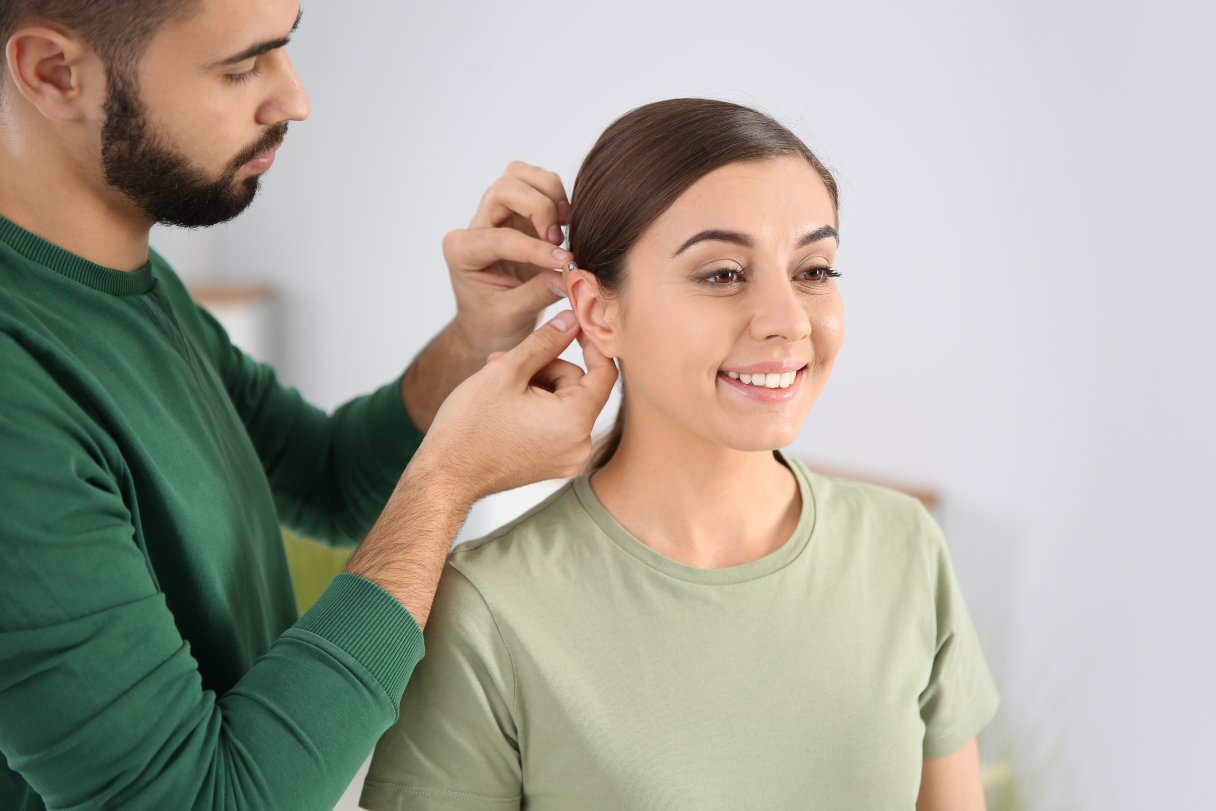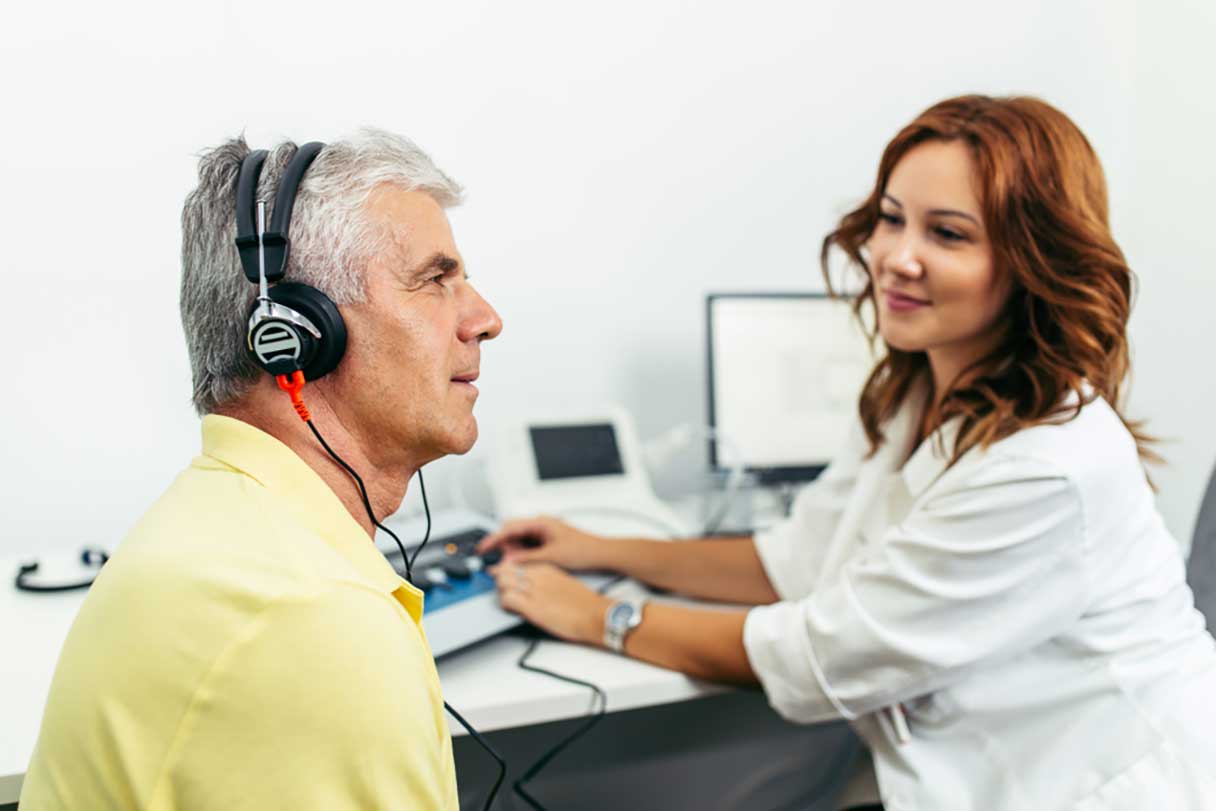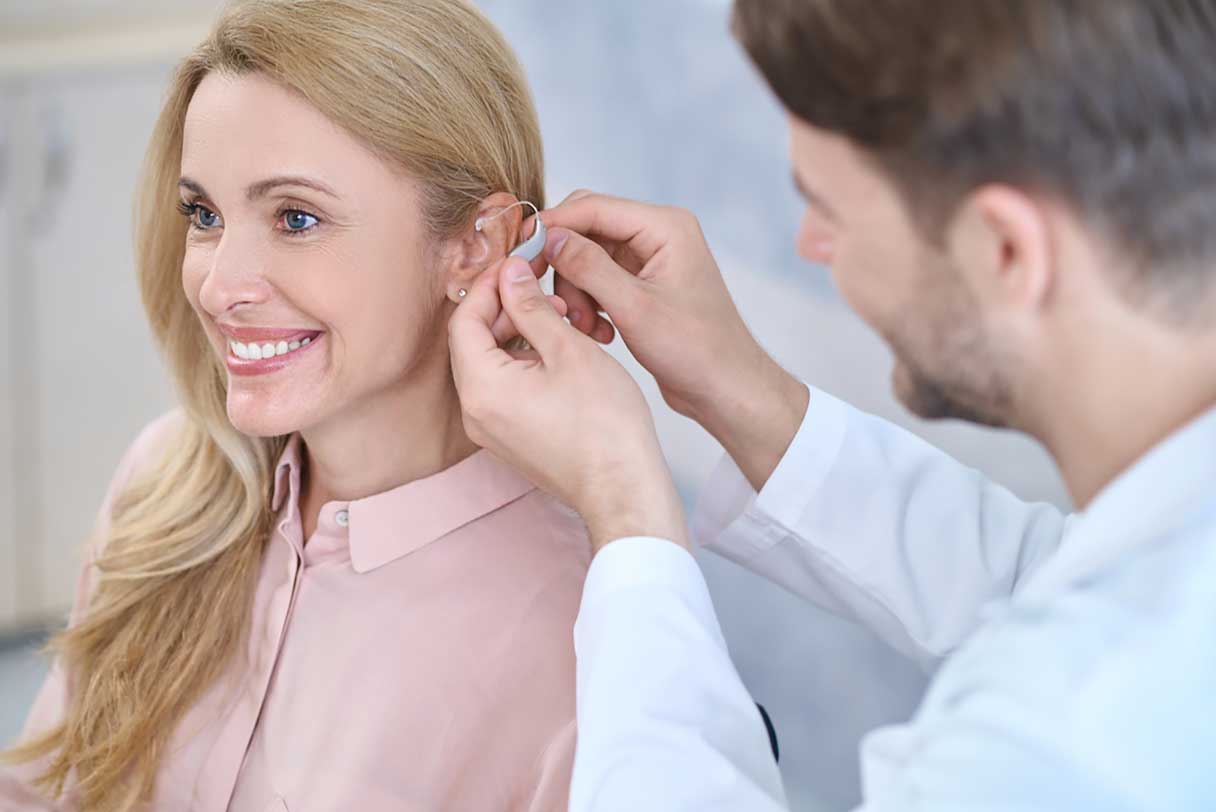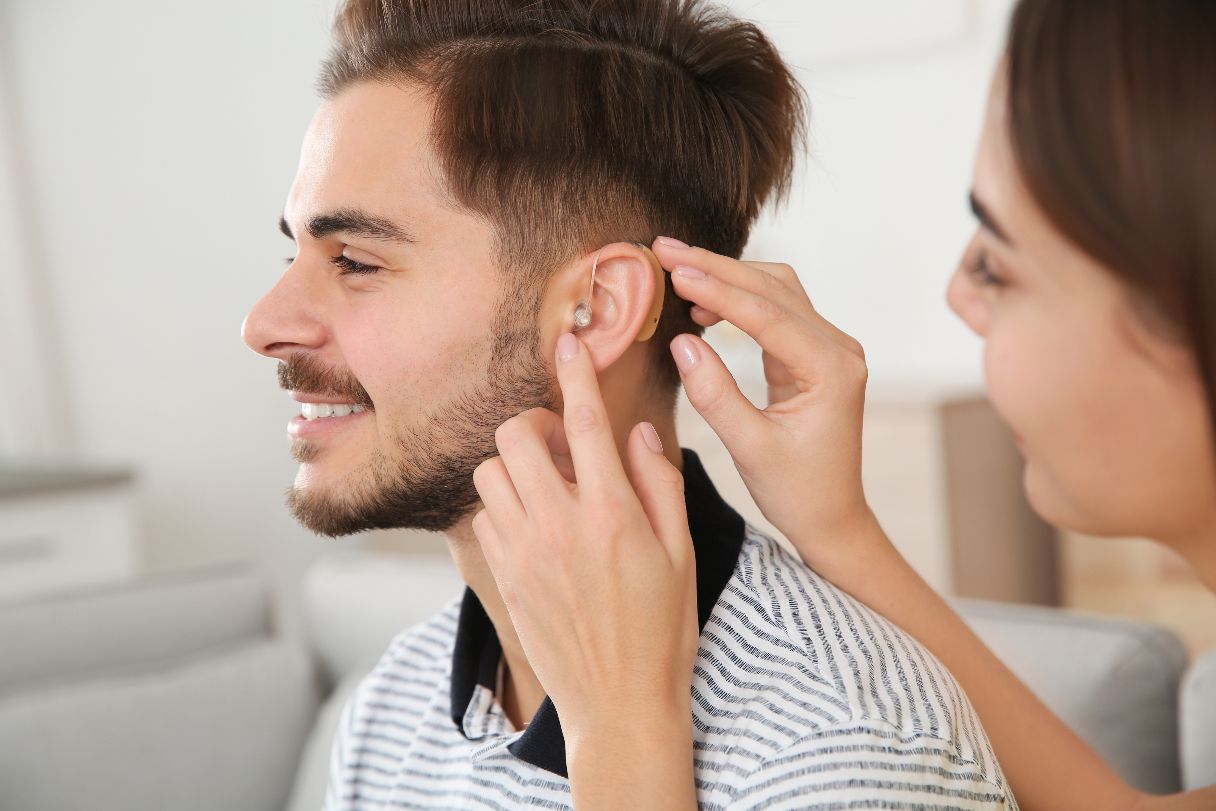Hearing aids can be vital to improving the quality of life for those with hearing loss, and cleaning and maintaining your hearing aids on a regular basis can help prevent reduced performance and the potential of getting an ear infection.1 What people wearing hearing aids may not realize, though, is that they need to clean their hearing aids daily to help keep them in top shape.2
Below, we’ll outline how to clean your hearing aids, the supplies you’ll need and when to seek a hearing care specialist if they are not working properly.2
How Often Should You Clean Hearing Aids?
It is recommended that you clean your hearing aids daily to remove earwax and debris, and get them professionally cleaned roughly every six months to maintain optimal performance.2
Setting yourself up with an easy-to-follow maintenance schedule can help make sure your hearing aids are working properly and may also:2
- Extend the life of the hearing aids
- Maintain sound quality
- Prevent ear infections1
- Prevent earwax buildup and moisture damage
Knowing how to maintain your hearing aids and when can help you keep your hearing aids clean. Below are recommendations on what to do on a daily, weekly and monthly basis.3
Daily maintenance
The goal of daily cleaning is to prevent earwax buildup and moisture that can damage hearing aids and decrease sound quality. This is especially important for in-the-ear (ITE) and in-the-canal (ITC) hearing aids.3
Here are some tips on how to maintain your hearing aids on a nightly basis:3
- Check for earwax blocking small openings.
- Keep them away from heat or direct sunlight.
- Make sure to turn your hearing aids off at night.
- Store your hearing aids in a dehumidifier case while you sleep.
- Use a small brush to remove any debris around the microphone and receiver.
- Wipe them down with a soft cloth to remove any accumulated oil, sweat and dirt.
Weekly maintenance
Taking a couple of minutes one day during the week to check batteries and do a deeper cleaning of your hearing aids can help them maintain their quality and lifespan.3
Here are some tips on how to maintain your hearing aids on a weekly basis:3
- Change the wax guards if your hearing aids have them.
- Check if your batteries need to be replaced.
- Check the tubing for cracks or moisture if you have behind-the-ear (BTE) hearing aids.
- Inspect your batteries for corrosion.
- Use an earwax pick to clean out stubborn earwax buildup.
Monthly maintenance
While keeping your hearing aids clean and free of buildup on a daily and weekly basis can be key to making your hearing aids last longer, there are also some steps you can take once a month to help ensure they are still working properly.3
Here are some tips on what you can do once a month to maintain your hearing aids:3
- Check for sound quality, such as feedback, whistling or sound distortion.
- Make sure your hearing aids are still comfortable and fit properly.
- Schedule time for a hearing care professional to do a deep clean and check for software updates.
- Think about replacing the dome (tip that sits in your ear) if you wear BTE hearing aids.
Essential Supplies for Cleaning Hearing Aids
Getting earwax, dirt and other unwanted materials out of your hearing aids can be essential to keep them working efficiently. Hearing aid tools can help you keep them clean.2
When you first get hearing aids, consider keeping a kit of the following recommended tools and supplies to help you maintain your type of hearing aids.2
These essential supplies may include:2
- Bulb blower to remove water from the tubing (for BTE hearing aids)
- Carrying case for your hearing aids when you are not using them
- Cleaning brush for the faceplate, body and sound port
- Dehumidifier to help get any moisture out
- Multitool that includes both the brush and the wire loop
- Soft cloth to wipe down hearing aids daily
- Tools to help get the battery out, which usually has a magnet at the end
- Wax guards or filters to guard against earwax buildup
- Wax pick or wire loop gets earwax and debris out of the small holes and hard-to-reach places
A dehumidifier can be helpful if you live in a humid climate or sweat heavily. This may be a simple jar with a drying agent inside, or you can get a dehumidifier that uses ultraviolet light to dry and sanitize your hearing aids. Both can be purchased online.2
Step-By-Step Guide to Cleaning Different Types of Hearing Aids
Hearing aids come in different styles, including behind-the-ear, in-the-ear and in-the-canal. While most of the steps for cleaning hearing aids are consistent with all types, some steps may differ depending on style.4
Make sure to check the manufacturer’s instructions for guidance on cleaning your particular model.1 Always start by washing your hands so you don’t transfer any dirt or germs.2
Behind-the-ear hearing aids
Behind-the-ear hearing aids come with a tube that sits behind your ear and is connected to either a receiver (dome) or earmold that is placed inside your ear.4
To clean BTE hearing aids:2
- Examine your hearing aid for any dirt or unwanted material.
- Wipe it down with a soft cloth.
- If your earmold or receiver has speakers, use a wire loop or multitool to clean the opening.
- If you don’t have speakers, remove the earmold or receiver from the hook and clean it using warm, soapy water.
- Use a bulb blower to get the water out of the tubing.
- Let all the pieces dry overnight.
In-the-ear and in-the-canal hearing aids
In-the-ear hearing aids and in-the-canal hearing aids are custom-made based on an ear impression taken by a hearing care professional. They sit directly inside your ear or deep in your ear canal.4
To clean ITE or ITC hearing aids:2
- Examine your hearing aid for any dirt or built-up wax.
- Hold the hearing aid with the openings facing downward so any particles dislodge.
- Use a soft-bristle brush to clean out earwax and dirt from all the openings and the microphone port.
- Use a wax pick or wire to get out any earwax or material that didn’t come out with the brush.
- Clean the wax filter with a brush daily, but change it out once a month.
- Wipe the entire receiver down with a soft cloth to ensure all dirt and debris are removed.
Because the receiver has electrical components, you should not submerge it in water or any type of fluid.2
How to Clean Hearing Aid Earmolds and Tubing
If you wear behind-the-ear (BTE) hearing aids, you may have an earmold that needs to be cleaned.5
You will also need to clean the tubing that wraps around your outer ear and connects with the earmold or receiver.6
Cleaning earmolds
An earmold is a custom-made device that is molded to fit the size of your ear. It can be soft (made with silicon and vinyl), or it can be hard (made with Lucite® and other acrylics).5
The purpose of the earmold hearing aid varies depending on the wearer’s needs; they can amplify sound or protect against it. It generally does not contain any controls or power source.5
Cleaning and disinfecting your earmold daily is vital to prevent a buildup of germs and contaminants that can cause an ear infection.5
The good news is, it is simple to do.7
- Wash your hands.2
- Wipe the earmold down with a soft cloth, and use a brush or wire loop to get out hard-to-reach particles.
- Use warm water and mild soap to wash the earmold when needed.
- Carefully dry and store in a clean, dry environment.
Don’t leave your earmolds on surfaces contaminated with germs. If they come into contact with body fluids, such as blood or mucus, they will need to be sterilized by a hearing aid specialist.5
Cleaning hearing aid tubing
The tubing connected to the BTE hearing aid can be a reservoir for earwax and dirt, and needs to be cleaned too.6
Steps to clean the hearing aid tubing include:6
- Wash your hands.2
- Thread a wire loop through the tubing and push it through the other side to remove wax and debris.
- Use a tissue or cloth to remove the debris from the end of the wire.
- Push the wire back and forth until you remove all unwanted material.
- Use a brush and a cloth to clean the tip of the tube.
- Soak in warm, soapy water.2
- Use a bulb blower to get the water out of the tubing.2
- Let it dry completely.2
What About the Batteries?
When cleaning your hearing aids, you should remove the batteries and clean the battery compartment with a brush. Let the device dry with the battery compartment open.2
Discard button batteries carefully, as pets or small children can easily swallow them.2
If the batteries are rechargeable, put them in the docking station until you are ready to use them again.2
Maintaining Hearing Aids
While cleaning hearing aids can be a quick and simple task, some things may potentially cause damage to your hearing aids.
To help maintain your hearing aids, it is advisable not to:8
- Use alcohol and other harsh cleaning products that can break down the hearing aid material
- Use water on the parts of your hearing aids that have electrical components
- Expose them to extreme heat or direct sunlight3
- Use sharp objects for cleaning7
- Store them in humid areas
When to Consider Seeing a Professional
Even if you follow the recommended cleaning schedule, sometimes it’s necessary to take them in for a professional hearing specialist to look at them.9
Some signs that you need to make a check-in appointment with a hearing aid specialist can include:9
- Any part of your hearing aid is broken or cracked.
- The battery is draining faster than usual.
- The hearing aid is not turning on.
- You have ear pain or discomfort or it’s no longer fitting properly.
- You hear muffled or distorted sounds.
- Your hearing aids are whistling or giving feedback.
Maintain Your Hearing Aids for Best Performance
Hearing aids can be a big investment, both financially and for your quality of life. Creating regular cleaning schedules can be vital to preventing ear infections, maintaining optimal performance and extending the lifespan of your hearing aids.
Financing Ear Care With the CareCredit Credit Card
The CareCredit credit card can help you pay for hearing care, including regular hearing tests, screenings and more.* Use our Acceptance Locator to find a hearing specialist near you that accepts CareCredit. Continue to invest in your wellness journey by downloading the CareCredit Mobile App to manage your account, find a provider on the go and easily access the Well U blog for more great articles, podcasts and videos.
In addition to hearing care, you can also use your CareCredit credit card for dentistry, cosmetic, pet care, vision, health systems, dermatology, pharmacy purchases, spa treatments and so much more within the CareCredit network. How will you invest in your health and wellness next?
Author Bio
Amy Isler, M.S.N., R.N., has more than a decade of nursing expertise. She combines her nursing experience and journalism background to create engaging and educational healthcare content for leading brands and publications, including GoodRx, Verywell Health, Vision Center and more. Her mission in writing is to provide positive, accurate and informative articles for consumers.







